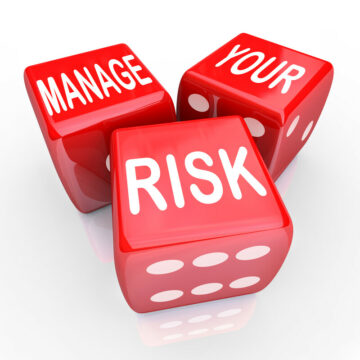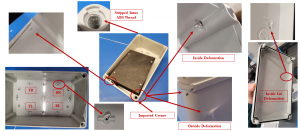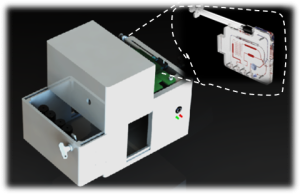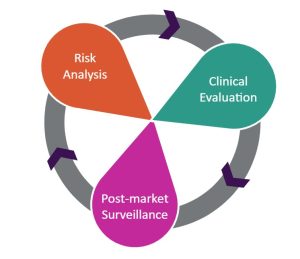 Medical device commercialization is typically broken into Four Phases: Phase Zero Product Definition, Phase One Engineering Design and Development, Phase Two Transfer, and Phase Three Manufacturing.
Medical device commercialization is typically broken into Four Phases: Phase Zero Product Definition, Phase One Engineering Design and Development, Phase Two Transfer, and Phase Three Manufacturing.
Our employee experts share their best tips and examples for each phase of the commercialization process in a four-part series. This blog covers Medical Device Phase Zero Product Definition pro tips.
General Product Definition Tips
Begin with the end in mind. This is way beyond the technical. Who’s going to buy this device? How do we design a product that ultimately will achieve the client’s business goal? Is the goal a bidding war between several different acquirers? Or is it positioning the product for the whole journey of a company?
Don’t commit to something too early. Keep a couple options on the table. Often teams whittle options down to a single horse in the race. If it gets sick or isn’t as fast as expected, they must go back and find a new horse.
Be open to a wide variety of possible solutions in Early in Pre-Alpha, Don’t pick a path without considering all the different possibilities. You might come up with something novel or better than what is on the market. An example is a novel device generating reflected patterns from the eye using a flexible OLED screen opens a number of possibilities that competing devices can’t meet. A more typical solution wouldn’t have all the advantages of the current design.
Ask lots of deep questions and look for the loose threads to help define the product. Often teams think they need a certain feature or activity. Listening carefully, you’ll hear things they haven’t thought about. That can add a lot of value when defining the product.
Seek potential users to understand their needs, these provide the basis for further specifications and design. If these are not well understood at the beginning of the project this can ultimately result in an unsuitable product and unhappy clients.
For example, on a project to revolutionize dental practice there was a broad question about the workflow within the dental office. The dentist-client felt they understood the workflow so outside input on workflow and human factors wasn’t needed. The QA/RA team heard gaps in areas including whether the patient would be prone or setting up, and if the procedure would be done in a dental chair. They build client trust, gaining permission to work with external resources. The learnings had a significant impact on the ultimate form of the device.
Commercialization Process
There’s a huge difference between technology and a product. It’s easy for technical types of all sorts to forget that.
Take commercialization gates seriously. It’s easy to tell yourself stories about how far advanced you are. But if you’re disciplined about the gates, you can avoid a situation where you think you’re designing for a production device. but the device is still in conceptual development because the core concept hasn’t been proved yet.
Get data as early as possible. In a technically focused early-stage development, it’s very easy to lose track of risk reduction. The whole venture is aided by, depending on the risk of the device, trying to get any sort of indication that it works as quickly and cheaply as possible. That makes a huge difference to the investment appeal of the venture.
In early-stage formative testing, having low fidelity forms different ways that the device could look. Getting user feedback can really inform what direction to take for all the devices used, especially for wellness devices that require more market uptake than medical devices.
Make Room for Innovation
Innovation is shaped like a diamond. First you broaden out, and then you narrow down. A tricky bit about Phase Zero is the typically low budgets available to find different paths forward in a new relationship. It’s hard to give hard answers at that early stage.
Companies that know exactly what they want often are very instructive. They want a very particular thing, and they don’t take advantage of the contracted firm’s experience with hundreds of other products. Building a product that the target customer wants requires broadening questions and engaging experienced contractors to help solve problems.
Beware of premature design in phase zero, like already envisioning an embodiment. Focus more on the challenges you’re trying to solve and being creative. On the flip side, avoid dithering about starting design. At some point in phase zero you need to commit to trying a path and explore it in implementation.
Don’t lock into one thing and give up if it seems tough at the first pass. Once there was a problem extruding a ceramic rod that makes and defines part of a device. While investigating alternatives the team discovered that femtosecond lasers could channel out a .05 inch of a ceramic rod into the channel as needed.
QMS and Regulatory
Avoid change control in the early stages of design and development. Stay flexible. A good balance of documenting prototypes includes a basic DHR. It’s a useful tool to ensure key things about prototypes are documented.
Design controls? Yes. Change control? No, but keep configuration control. You want a record of what it was that you tested so that if it works, great. And if it didn’t work, you know what’s changed. That also applies to buying parts. They’re gold. They go out, so we know what we get. Then we always have a BOM, even if something’s minimalist.
Determine which geographic markets the product will serve, because that will inform which guidance and standards to consider as part of the design. If looking into the U.S., look at FDA recommended guidance(s). If there is software in the device, cybersecurity must be considered.
Conduct a brutally honest technology assessment upfront with an emphasis on honesty. Be honest about design maturity, science, and concepts you are relying on. One product was designed around a single clinical study. The product was geared towards treatments with a very specific use case based on that single study. The core concept was not challenged internally and the subsequently FDA advised that it was not a possible avenue during the first FDA Q-Sub meeting. A whole host of development had to be repackaged and creative solutions were required to come up with a revised FDA submission.
Risk Management
It’s worth starting your risk framework in phase zero. What are the biggest risks you’re trying to address? Make sure you’re tackling the biggest ones.
In a nutshell, Phase Zero is all about proving the technology and proving in principle that a device can be created to meet the business case. This means figuring out what a medical device needs to be to meet the clinical and market needs, de-risking technological choices, exploring human interaction, conducting trial runs through risk management for safety and efficacy, exploring device level architecture options, and evaluating residual program risk to ensure consensus that the plan is heading in the right direction.
We hope you enjoyed our tips and examples for Medical Device Phase Zero Product Definition. We’d enjoy hearing tips and feedback from readers. Our next blog in this four-part series covers Medical Device Phase One Engineering Design and Development pro tips.
Image: StarFish Medical
Astero StarFish is the attributed author of StarFish Medical team blogs. We value teamwork and collaboration on all of our medical device development projects.
[embedded content]
- SEO Powered Content & PR Distribution. Get Amplified Today.
- PlatoData.Network Vertical Generative Ai. Empower Yourself. Access Here.
- PlatoAiStream. Web3 Intelligence. Knowledge Amplified. Access Here.
- PlatoESG. Automotive / EVs, Carbon, CleanTech, Energy, Environment, Solar, Waste Management. Access Here.
- BlockOffsets. Modernizing Environmental Offset Ownership. Access Here.
- Source: https://starfishmedical.com/blog/pro-tips-for-medical-device-phase-zero-product-definition/
- :is
- :not
- :where
- $UP
- 200
- 300
- 8
- a
- About
- Achieve
- activity
- add
- address
- advanced
- ADvantage
- advantages
- All
- already
- also
- alternatives
- always
- an
- and
- answers
- any
- appeal
- architecture
- ARE
- areas
- around
- AS
- assessment
- At
- author
- available
- Avenue
- avoid
- back
- Balance
- based
- basic
- basis
- BE
- because
- been
- Beginning
- being
- BEST
- Better
- between
- Beyond
- Biggest
- Bit
- Blog
- blogs
- broad
- broaden
- Broken
- Budgets
- build
- Building
- business
- but
- buy
- Buying
- by
- CAN
- carefully
- case
- certain
- Chair
- challenged
- challenges
- change
- changed
- Channel
- choices
- client
- clients
- Clinical
- collaboration
- COM
- come
- commercialization
- commit
- company
- competing
- concept
- concepts
- conceptual
- conducting
- Configuration
- Consensus
- Consider
- considered
- considering
- content
- contractors
- control
- controls
- Core
- could
- Couple
- covers
- created
- Creative
- Current
- customer
- Cybersecurity
- data
- deep
- Defines
- defining
- definition
- Depending
- Design
- designed
- designing
- Development
- device
- Devices
- Diamond
- difference
- different
- direction
- disciplined
- discovered
- do
- documented
- done
- Dont
- down
- during
- each
- Early
- early stage
- easy
- efficacy
- embedded
- embodiment
- emphasis
- Employee
- end
- engaging
- Engineering
- enjoy
- ensure
- especially
- evaluating
- Even
- exactly
- example
- examples
- expected
- experience
- experienced
- experts
- explore
- Exploring
- external
- eye
- factors
- far
- FAST
- fda
- Feature
- feedback
- fidelity
- Find
- First
- flexible
- Flip
- Focus
- focused
- For
- form
- forms
- Forward
- four
- Framework
- from
- further
- gaining
- gaps
- Gates
- geared
- generating
- geographic
- get
- getting
- Give
- Go
- goal
- going
- Gold
- good
- great
- guidance
- had
- Hard
- Have
- having
- Heading
- hear
- heard
- hearing
- help
- hope
- Horse
- host
- How
- HTTPS
- huge
- human
- human factors
- Hundreds
- if
- Impact
- implementation
- in
- includes
- Including
- indication
- inform
- input
- interaction
- internally
- into
- investment
- IT
- journey
- jpg
- Keep
- Key
- Know
- lasers
- Level
- like
- Listening
- Look
- looking
- lose
- Lot
- Low
- make
- MAKES
- management
- manufacturing
- Market
- Markets
- maturity
- max-width
- means
- medical
- medical device
- medical devices
- Meet
- meeting
- might
- mind
- more
- must
- Need
- needed
- needs
- New
- next
- no
- novel
- number
- of
- Office
- often
- Oled
- on
- once
- ONE
- ones
- open
- opens
- Options
- or
- Other
- our
- out
- outside
- part
- particular
- parts
- pass
- path
- patient
- patterns
- permission
- phase
- pick
- plan
- plato
- Plato Data Intelligence
- PlatoData
- player
- Point
- positioning
- possibilities
- possible
- potential
- practice
- Premature
- principle
- Pro
- Problem
- problems
- procedure
- process
- Product
- Production
- Products
- Program
- project
- prototypes
- proved
- provide
- question
- Questions
- quickly
- Race
- readers
- really
- recommended
- record
- reduction
- reflected
- regulatory
- relationship
- relying
- require
- required
- requires
- Resources
- result
- revolutionize
- right
- Risk
- risk management
- risks
- Room
- runs
- s
- Safety
- Science
- Screen
- seems
- Series
- seriously
- serve
- setting
- several
- shaped
- Share
- side
- significant
- Simple
- single
- situation
- So
- Software
- solution
- Solutions
- SOLVE
- some
- something
- specific
- specifications
- Stage
- stages
- standards
- Starfish
- Starting
- stay
- Still
- Stories
- Study
- submission
- Subsequently
- sure
- table
- tackling
- Take
- Target
- team
- teams
- teamwork
- Technical
- technically
- technological
- Technology
- tell
- tested
- Testing
- than
- that
- The
- their
- then
- There.
- These
- they
- thing
- things
- Think
- this
- thought
- three
- Through
- tips
- to
- too
- tool
- tough
- towards
- track
- transfer
- treatments
- trial
- Trust
- two
- types
- typical
- typically
- u.s.
- ultimate
- Ultimately
- understand
- understood
- use
- use case
- used
- User
- users
- using
- value
- variety
- venture
- very
- Video
- want
- wants
- war
- was
- Way..
- ways
- we
- WELL
- Wellness
- were
- What
- What is
- when
- whether
- which
- while
- whole
- wide
- will
- with
- within
- without
- Work
- workflow
- works
- worth
- would
- yes
- yet
- you
- Your
- yourself
- youtube
- zephyrnet
- zero












